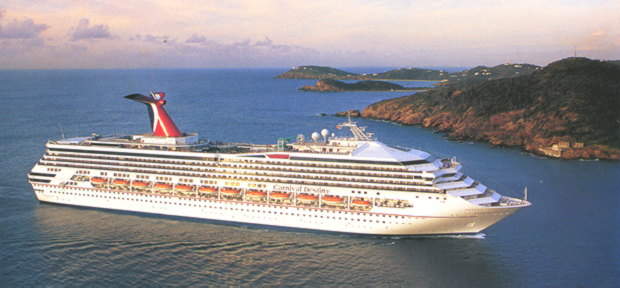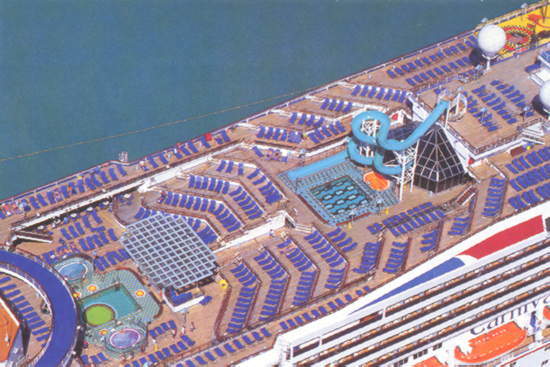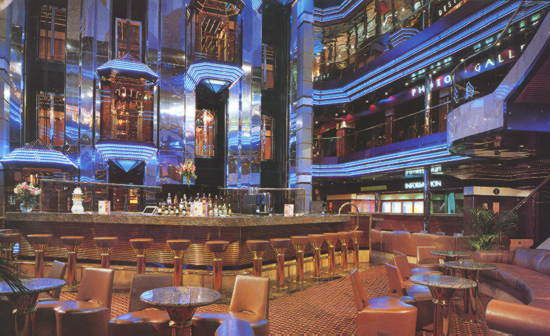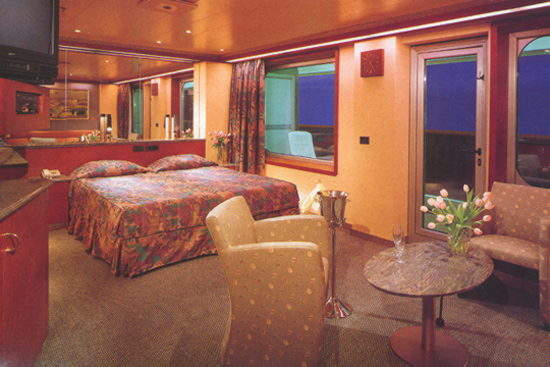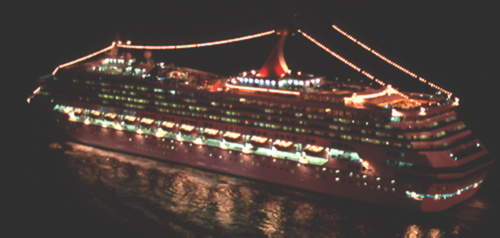Built by Fincantieri Cantieri Navali in Italy, Carnival Destiny was the first cruise ship to exceed 100,000gt and, as such, set new standards in design and construction. Carnival Destiny sails every Sunday from the Port of Miami, alternating eastern and western Caribbean itineraries. Her sister vessel is Carnival Triumph. The Panama-flagged vessel is built to Lloyd’s Register classification.
Dimensions
The 101,353gt vessel is 272.2m long, with a beam of 35.48m and a draught of 8.2m.
Systems
Carnival Destiny is powered by a diesel-electric plant, based on six Sulzer medium-speed turbo-charged diesel generator sets providing power at 6,600V, 60Hz: four are 16 cylinders in V form with a rated output of 11,520kW at 514rpm, and two are twelve cylinders in V form with a rated output of 8,640kW at 514rpm. The vessel is fitted with an ABB Industria electrical propulsion pack.
Carnival Destiny has a cruising speed of 20 knots and is able to operate at sea for up to 17 days continuously.
The vessel is fitted with six thruster units with controllable pitch propellers, three forward and three aft, each driven by one 1,720kW motor, and has computer-controlled retractable fin stabilisers from the UK-based firm, Brown Brothers.
The vessel is equipped with 22 Harding lifeboats that are fitted in a wholly-dedicated semi-open deck (deck 4). Each boat can carry 150 people and allows full emergency embarkation in the stowed position. They can be lowered in a single operation, reducing the overall time required for boarding and launching.
Facilities
Carnival Destiny has a maximum passenger capacity of 3,360 and carries a crew of 1,000. The vessel has a total of 1,321 passenger cabins, including eight 36m² penthouse suites, 40 suites of 27m² and a further 756 standard outside cabins, measuring approximately 18m², with balconies or windows. The standard inside cabins measure appoximately 16m².
With a total of 16 decks, the configuration of Carnival Destiny makes it easy for passengers to find their way around, the main entertainment and recreation decks being located between the passenger decks. A total of 27 Schindler elevators, 18 of which are for passenger use, facilitate movement around the ship.
All the main public areas radiate from the rotunda, a central nine-deck atrium. The rotunda’s flagship bar on deck 3 offers a view up through the skylight on sun deck 11.
With an auditorium occupying three decks and a stage complex that takes up five, Carnival Destiny’s main theatre, the palladium show lounge, is the largest seen on any cruise ship and can seat 1,600 people. A separate aft lounge seats 600 people.
The ship has two main restaurants, both occupying two decks. The main restaurant is aft and seats 1,050 while the forward restaurant seats 750. The upper-deck sun and sea lido seats 868. In addition, passengers can choose from the 24-hour pizza parlour, buffet and salad bars, Italian and Chinese buffets and the grille, which serves American-style fast food.
New innovations on Carnival Destiny include the side deck, consisting of open promenades that run the length of the ship on both sides and a 525ft long, fully-enclosed double-width promenade called destiny’s way. Comprising bars and cafés, a tuxedo rental, a flower shop and a video game and virtual reality emporium, destiny’s way ends in the three-deck high captain’s hall.
The ‘millionaire’s club’ casino offers high-rollers tables, with minimum chips of $100.
Sports facilities on-board include a gymnasium, an aerobics room, whirlpools, and sauna, steam and massage rooms. The nautica jogging track on sun deck 11 is positioned over the sun and sea pool.
The ship offers a teenage entertainment programme and separate children’s facilities, including a play centre with its own gym and pool.

